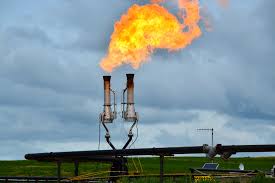
Methane concentrations in Earth's atmosphere increased at record speed over the past five years. At least two-thirds of annual methane emissions now come from human activities.

The warning signs are all there: record-breaking heat, failing health, vanishing ice sheets, and more unpredictable weather.

A satellite that measures methane leaks from oil and gas companies is set to start circulating the Earth 15 times a day next month.

Beneath one Arctic island's permafrost, millions of cubic meters of methane are trapped—and scientists have now learned that it can migrate beneath the cold seal of the permafrost and escape.

Since 2006, the amount of heat-trapping methane in Earth's atmosphere has been rising fast. It may signal that a great transition in Earth's climate has begun.

NASA scientists, using a tool designed to study how dust affects climate, have identified more than 50 spots around the world emitting major levels of methane, a development that could help combat the potent greenhouse gas.

Scientists believe that immense quantities of methane are stored under Antarctica’s seafloor. They don’t know the leak’s cause, but global warming probably isn’t to blame, since the Ross Sea has not yet warmed significantly.

Many questions remain unanswered about methane hydrates, including a rather big one: could our current climate change thaw some hydrates, contributing to further warming in the near future?

Methane is many times more potent than carbon dioxide, but it's also more difficult to capture.